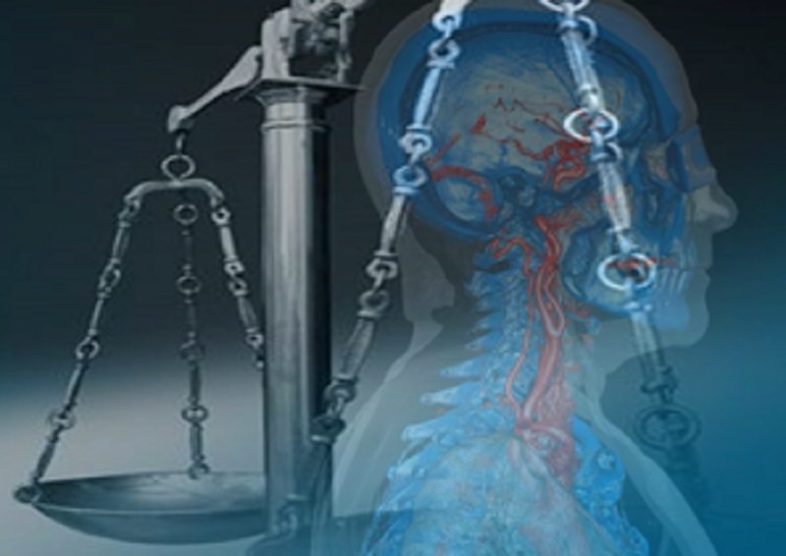This is article is republished from Insight Crime, a part media, part academia and part think tank providing regular reporting, analysis and investigation on the threat to national and citizen security in Latin America and the Caribbean from organized crime. Read the original article here.
In Latin America, the participation of women in organized crime has been somewhat overlooked in academic and public policy debate due to the male dominance in the different criminal economies and the tendency to see criminal activities as a “man’s activity.” However, a more detailed analysis of drug trafficking, human trafficking and migrant smuggling through a gender lens provides an understanding of the roles women play.
After examining a series of documents, data and information collected through fieldwork, this joint investigation by InSight Crime and Universidad del Rosario’s Colombian Organized Crime Observatory reveals the complexity of female roles inside organized crime and questions the tendency to present women only as victims, or in some cases, as victimizers.
From cooks and coca harvesters to owners of drug empires or trafficking and smuggling networks, women are versatile move in a broad spectrum of roles, challenging the existent division of labor based on gender while at the same time coexisting with criminal organizations that continue to impose a patriarchal system.
*This article is part of an investigation by InSight Crime and Universidad del Rosario’s Colombian Organized Crime Observatory into the complexity of female roles inside organized crime, questioning the tendency to present women only as victims, or in some cases, as victimizers. Download the complete “Women and Organized Crime in Latin America: Beyond Victims and Victimizers” report here.
Highlights of this investigation include two case studies — one on women and gangs in El Salvador and another on human trafficking and migrant smuggling in the Colombia-Venezuela border town of Cúcuta — and profiles of some of the greatest female protagonists of organized crime in recent times.
The report also analyses the use of violence by women, a characteristic that is usually attributed to men and masculine behavior.
Based on this, as well as the examination of the main factors that push women towards organized criminal activity, a series of public policy recommendations are set forth for governments and local authorities. These are aimed at understanding a phenomenon that, aside from being under-analyzed, is continuously changing shape.
Introduction
Organized crime is one of the main threats facing Latin America. Among its disruptive effects, the high levels of violence seen across the region are especially alarming. Rising indicators of violence in most Latin American countries, including homicides, rapes and robberies, are closely related to the increase in various organized crime activities. Since the 1990s, the opening-up of economies, in combination with institutional weakness and social factors — such as poverty and inequality — have favored the growth of transnational criminal activities, including drug trafficking, arms trafficking, human trafficking and migrant smuggling.
While the number of women in organized crime has been relatively low compared to that of men, their participation has recently been growing and diversifying. A brief look at Latin America’s prison situation shows a net increase in female inmates for acts associated with organized crime, especially for drug trafficking, the crime for which most women are incarcerated. In the last decade (2009-2019), the total number of female prisoners across Latin America increased by 52 percent, more than double the region’s prison population growth rate. Yet women remain in the minority in terms of the total prison population, ranging between 4.5 and 10 percent depending on the country.
However, in certain countries seeing intense criminal activity, such as Colombia and Mexico, the increase in female prisoners has been exponential. In Colombia, the National Penitentiary and Prison Institute (Instituto Nacional Penitenciario y Carcelario – INPEC) reports that the female prison population has grown by 484 percent over the past 30 years. In Mexico, figures from the National Institute of Statistics and Geography (Instituto Nacional de Estadística y Geografía – INEGI) show a 56 percent jump between just 2010 and 2015.
Despite this trend, the roles women play in criminal structures continue to be underrepresented in studies and public policies about violence and organized crime in Latin America. Due to the scarcity of information and data, investigations into this topic are limited, although they have increased in the last decade. The relative invisibility of women in debates about organized crime stems from the general perception that they are appendices to male criminals, usually partners or purveyors of sex. Stereotypes of women as being dependent and weak in turn reinforce the notion that they are incapable of making independent decisions regarding their participation in illegal activities.
By ignoring the active role women can play in criminal structures, it is impossible to gain a complete picture of organized crime. To fill this gap, this report charts the participation of women in three of Latin America’s main criminal economies: drug trafficking, human trafficking and migrant smuggling. An exhaustive review of articles, news reports and books on women and organized crime in the region show that — in the three illicit economies indicated — women exercise multiple roles, fluctuating between victims and trophies on one side and active criminal protagonists on the other.
Gender constitutes a highly useful analytical lens through which to look at the distinct roles women play in organized crime groups — especially when considering the socially constructed meanings and behaviors enforced on men and women alike, which are used to divide their social positions and establish a hierarchy based on male dominance, female inferiority and submissiveness.
This will allow for the development of public policies that are more sensitive to the different roles women play within criminal economies. Instead of being considered exclusively as victims or accomplices subordinate to male figures, this report aims to show that women can, and do, act of their own accord in a criminal environment. Women are also involved in violence, clashing with the traditional vision of the roles they have in criminal groups.
The document explores the roles of women in organized crime in Latin America across four sections. As part of its design, an extensive bibliography was constructed, consisting of academic texts, official reports, studies by non-governmental organizations and press reports. At the same time, institutional databases from different countries across the region were reviewed, confirming that Colombia and Mexico see more women participating in organized crime when compared to the rest of the region. In building the case studies included in the report, field trips and interviews were conducted in El Salvador and Colombia.
In the first section, the gender perspective is introduced as an analytical lens for the study of organized crime. Beyond showing the impact that gender has on the varied ways women and men involve themselves in criminal activities, it shows how gender stereotypes associated with organized crime help to hide the roles women play therein. The second section characterizes the roles played by women in the three selected criminal economies — drug trafficking, human trafficking and migrant smuggling — in order to highlight the range of women’s participation in each. This includes a case study about human trafficking in Colombia.
In the third section, profiles of specific women and their role in criminal economies allows us to show how women have largely gone unnoticed in most of the existing literature on organized crime, as well as their specific uses of violence. The second case study, which examines the involvement of women in youth gangs in El Salvador, complements the analysis by focusing on the violent behavior of these young women. This seeks to debunk two assumptions about women and organized crime: that they only exercise subordinate roles and, by extension, that they commit violent acts only when due to male manipulation and control or some emotional extreme.
Finally, in the last section, some conclusions are offered and a set of public policy recommendations are formulated based on this analysis.
Gender and Organized Crime
As stated previously, from a gender perspective, the social behaviors of men and women are not natural or biological but socially constructed. In addition to establishing the characteristics that each person must possess and the roles they must play, gender orders these hierarchically based on a presumption of male superiority and female inferiority. This results in the constitution of gender arrangements: “some formal, such as constitutions, laws, decrees and resolutions; others informal, such as cultural conventions, customs and daily practices that regulate relations between men and women.”
Gender arrangements are manifested in all manners of social activity. Organized crime is no exception. This means that, as happens in legal areas, gender also determines the way in which women get involved, act and interact with other actors in specific illegal or criminal contexts. This frequently implies the subordination of women in spaces controlled by men. In this regard, Lilian Paola Ovalle and Corina Giacomello from the Autonomous University of Baja California point out — referring to drug trafficking — that “gender relations are built on a set of attitudes and behaviors that discriminate and marginalize women because of their sex. This is empirically observed in the limited roles and functions that are assigned to women within drug trafficking networks.”
Studies on organized crime in Latin America and the world have focused mainly on the forms of action and victimization caused by male-led criminal groups. This has implied that research on crime presents the problem as one of men, which tends to ignore or minimize the perspectives and participation of women. A second consequence is that analyses of the role of women in organized crime focus on their roles as victims or passive collaborators; or on their relationships — as lovers or relatives — of male gang members.
Their entrance into organized crime is primarily the result of socio-economic motivations derived from poverty and precarious living conditions, the existence of family relationships within criminal groups and, finally, sentimental or sexual relationships with male leaders of criminal organizations.
Socio-Economic Needs
Socio-economic needs in Latin America are driving women (and men) to become involved in criminal activities. As happens in other regions of the Global South, a high percentage of Latin America’s impoverished are women. This “feminization” of poverty is correlated with a lack of access to education and employment, factors which partly explain why certain women may turn to organized crime as a way to boost their income. In effect, most female prisoners in Latin America are not only poor, but they are without professional qualifications or work experience to access better opportunities.
In line with this problem, incarcerated women are often single mothers who are the main providers for their children. A 2018 study by the Inter-American Development Bank across eight Latin American countries found that 87 percent of female prisoners had children, a slightly higher percentage than male prisoners.
Poverty, inequality and few work opportunities are factors pushing women towards illegality. While it is not the purpose of this report, it is important to note that the socio-economic pressure women face to commit illegal acts translates into many female prisoners facing real difficulties to access appropriate legal counsel.
Family Ties
Family ties also explain how women become involved with organized crime activities. To illustrate this, a recent report by the United Nations Office on Drugs and Crime (UNODC) and Colombia’s Justice Ministry found that 53.4 percent of women interviewed inside Colombian prisons between 2018 and 2019 had at least one relative also in prison, usually their romantic partners (38 percent), brothers (20 percent) or other relatives (42 percent). These statistics suggest that an important number of women entering organized crime do so as the partners, mothers, daughters and sisters of male members of criminal groups, which reiterates and reinforces their subordinate role in the criminal world.
Gustavo Riquelme and Omar Barriga from Universidad de Concepción in Chile point out that the entry of women into criminal organizations is often linked to their appropriation of knowledge regarding criminal activities carried out by people close to them, creating bonds of trust and loyalty that are highly valued by the members of criminal organizations. Annette Hübschle agrees that women often end up in leadership or decision-making positions when one of their family members — especially spouses who lead criminal structures — are jailed or killed, leaving a hole to be filled. This scenario, which will be explored in the third section of this report, is one of the most complex in terms of gender arrangements within organized crime, since the rise of women to leadership positions clashes with a predominantly patriarchal structure.
Narcoculture and Emotional-Sexual Relationships
Drug trafficking groups often involve social interactions that reinforce the stereotype of male superiority and feminine inferiority and objectification. The aesthetic and cultural representations of the “narco” exalt the drug trafficker lifestyle, combining the exercise of violence and the open display of wealth.
Narcoculture also idealizes certain images of feminine beauty. Usually involving “body transformation as a guarantee of … adjustment and group membership,” women can become “objects” or “trophies” that men use to exhibit the power and success derived from their criminal activities. Thus, in those communities where organized crime has reached a certain level of social acceptance and where “easy money” constitutes an enviable lifestyle, the criteria by which women are judged become crucial parts of how women participate in criminal activities.
If the position of female subordination resulting from these depictions of gender roles implies the risk of women becoming victims, the conscious decision taken by some women to enter the world of drug trafficking as an opportunity for social ascent should not be underestimated. The third section of this report includes documented cases of specific women who made use of the social rules and beauty standards imposed by narcoculture to attain important positions within criminal organizations.
Consequently, over the years the image of the “trophy” woman that accompanies the drug dealer has evolved towards that of female “bosses.” These are women who managed to impose themselves in a predominantly masculine world without losing the stereotypical “feminine” attributes that allowed them to be linked as companions or wives in the first place. Frequently, this transition is made through the acquisition of technical, financial or administrative skills, as well as the formation of family relationships with leading men in criminal organizations.
Studies of female criminology are increasingly looking at women as agents acting of their own will, even in ways that deviate from socially acceptable norms, which view women as maternal, pure, passive and docile.
As will be outlined in the rest of this report, the many cases of women with agency in criminal groups complicate gender roles in these scenarios, since they subvert traditionally assigned roles for women and men. Essentially, what this shows is that the participation of women in organized crime groups does not respond only or exclusively to their supposed submissiveness to men. On the contrary, it is the result of socio-economic needs that result from patriarchal power relations, social aspirations, skillsets and expertise, among others. Therefore, institutional efforts which insist on viewing the role of women purely as subordinates cannot see the full scope of the situation.
As will be discussed in this report, numerous cases of women in leadership roles have complicated the vision of how gender roles are assigned in criminal scenarios.
Next:
- Section 2: Roles of Women in Organized Crime
- Section 3: Female Criminal Leadership and Differing Use of Violence
- Section 4: Conclusions and Recommendations
*This article is part of an investigation by InSight Crime and Universidad del Rosario’s Colombian Organized Crime Observatory into the complexity of female roles inside organized crime, questioning the tendency to present women only as victims, or in some cases, as victimizers. Download the complete “Women and Organized Crime in Latin America: Beyond Victims and Victimizers” report here.











































